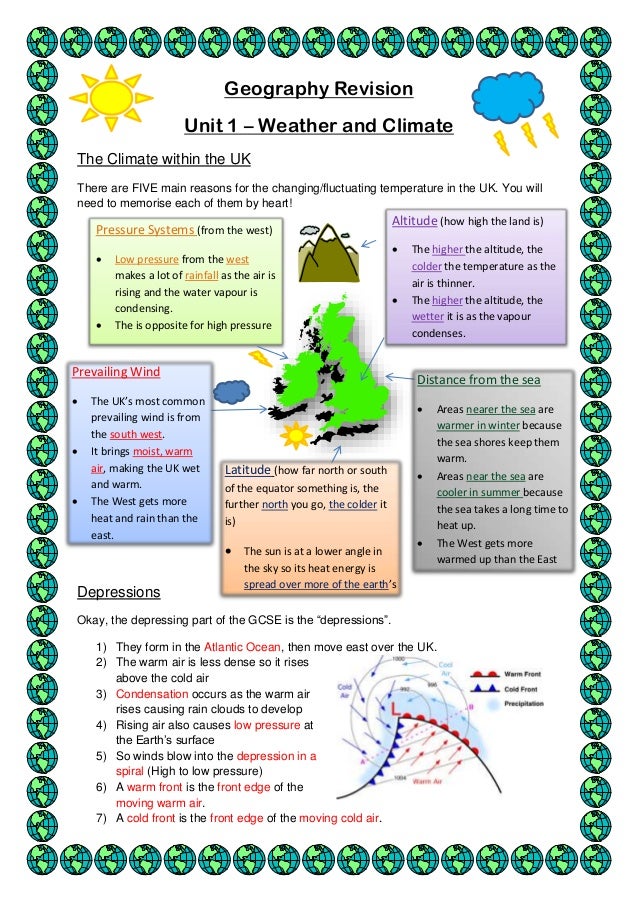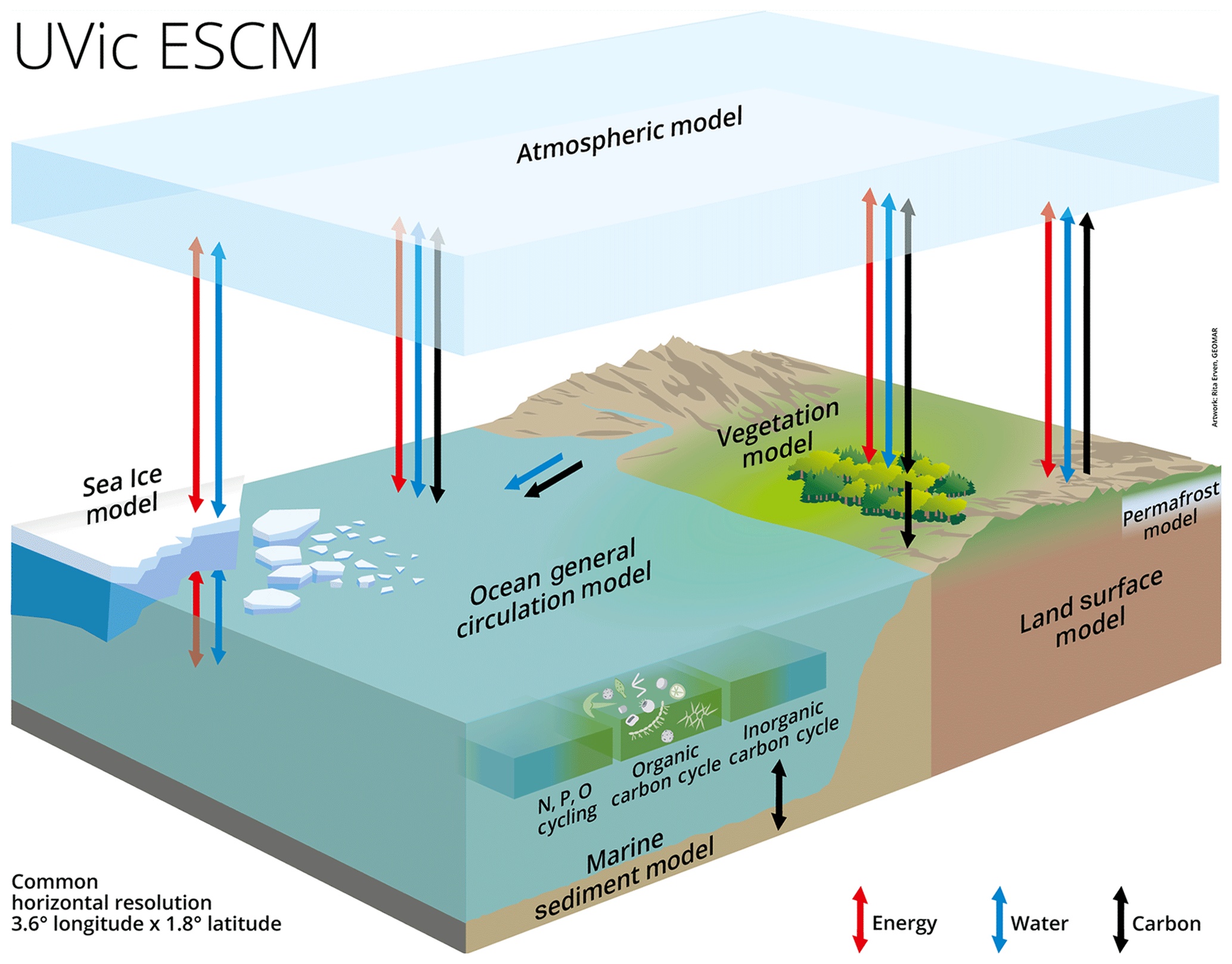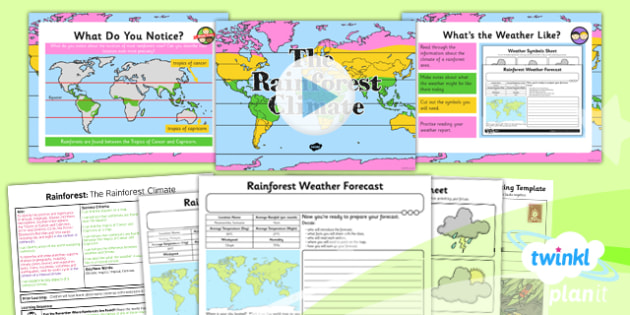ID: 12644 Language: English School subject: Social Science Grade/level: second grade Age: 6-7 Main content: Weather and climate Other contents: Add to my workbooks (7) Download file pdf Embed in my website or blog Add to Google Classroom. Rising air masses and low-pressure areas are usually associated with clouds and stormy condi-tions, while descending air and high-pressure areas at the surface usually mean fair weather conditions. Regions of descending or falling air cause high-pressure areas at the surface, and, in general, bring. Weather: t he state of the atmosphere at a particular place and time as regards heat, cloudiness, dryness, sunshine, wind, rain, etc. Climate: the weather conditions prevailing in an area in general or over a long period. Climate is weather measured over a long period of time. Climate = clothes in a closet. Weather = clothes for the day. The climate is the common, average weather conditions at a particular place over a long period of time ⠀昀漀爀 攀砀愀洀瀀氀攀Ⰰ 洀漀爀攀 琀栀愀湜ഀ ㌀ 礀攀愀爀猀尩.
- Unit 2.3: Weather And Climate Geography Activity
- Unit 2.3: Weather And Climate Geography Climate
- Unit 2.3: Weather And Climate Geography Change
- Virginia Climate And Geography
Starter |
Activities |
Weather or Climate |
Unit 2.3: Weather And Climate Geography Activity
Weather |
Climate |
| Are each of these statements related to weather or climate? |
| “I think we should move to France where it is warmer.” |
| “My washing will never dry today.” |
| “December is wet and cold.” |
| “Where should we go for our skiing holiday this year?” |
| “There is too much fog for the plane to land.” |
| “Bananas grow in Jamaica because it is hot.” |
| “Sports Day is cancelled, it is raining too much.” |
| “Take your coat to school today.” |
| “It’s October, it’ll be getting cold soon, I’d better put the heating on.” |
| “ Madrid, in August, will be very hot.” |
Weather |
| What is the weather doing today in your town/city? What is it forecast to do tomorrow? |
Climate |
| The World Map of Köppen-Geiger Climate Classification shows the different types of climate you will find across the globe. The classification is based upon Main Climate, Precipitation and Temperature. |
A4 Version | Google Earth Version | Source |

| Worksheet Placemarks[Hint: Turn Terrain off in Google Earth] |
Download the Google Earth Overlay of the Köppen-Geiger Climate Classification from the link above plus the Worksheet Placemarks. For each of the locations listed in the table on the worksheet - find out the code for the climate classification they are in and then use the code to write down the ‘Main Climate’, ‘Precipitation’ and ‘Temperature’. |
Review and Homework Task |

Weather Log Task |
Your task is to keep a weather diary/log for the next 7 days. Download the template spreadsheet below to give you a structure for your weather diary. If you use Google Docs you can upload the spreadsheet and keep your weather diary online, sharing it with your educator. |
geographyalltheway.com - Online Geography Resources | richardallaway.me |
© 2006-2019 - All Rights Reserved - Author: Richard Allaway | Logout |
This article throws light upon the six factors that influencing temperature. The factors are: 1. Latitude 2. Altitude 3. Continentality 4. Ocean Currents and Winds 5. Slope, Shelter and Aspect 6. Natural Vegetation and Soil.
Factor # 1. Latitude:
Due to the earth’s inclination, the mid-day sun is almost overhead within the tropics but the sun’s rays reach the earth at an angle outside the tropics. Temperature thus diminishes from equatorial regions to the poles.
This is illustrated in Fig. 107. It shows two bands of rays coming from the sun to two different latitudes on the earth’s surface. Band RI falls vertically over the equatorial latitudes on surface E. Band R2 falls obliquely over the temperate latitudes on surface T. RI travels through a shorter distance and its concentrated solar insolation heats up a smaller surface area; temperature is thus high.
On the other hand, R2 travels through a longer distance and much of its heat is absorbed by clouds, water vapour and dust particles. Its oblique ray has to heat up a large area; temperature is therefore low.
Factor # 2. Altitude:
Since the atmosphere is mainly heated by conduction from the earth, it can be expected that places nearer to the earth’s surface are warmer than those higher up. Thus temperature decreases with increasing height above sea level.
This rate of decrease with altitude (lapse rate) is never constant, varying from place to place and from season to season. But for all practical purposes, it may be reckoned that a fall of 1°F. occurs with an ascent of 300 feet or 0.6°C. per 100 meters. It is usually more in summer than in winter.
For example in temperate latitudes, in summer, an ascent of only 280 feet will cause the temperature to drop by 1°F., whereas in winter it requires 400 feet. Similarly, the lapse rate is greater by day than at night, greater on elevated highlands than on level plains.

ADVERTISEMENTS:
In tropical countries where the sea level temperature is 80°F., a town that is located at a height of 4,500 feet (shown as X in Fig. 108) will record a mean temperature of 65°F.
Factor # 3. Continentality:
Land surfaces are heated more quickly than water surfaces, because of the higher specific heat of water. In other words, it requires only one-third as much energy to raise the temperature of a given volume of land by 1°F. as it does for an equal volume of water. This accounts for the warmer summers, colder winters and greater range of temperature of continental interiors as compared with maritime districts.
Factor # 4. Ocean Currents and Winds:
Both ocean currents and winds affect temperature by transporting their heat or coldness into adjacent regions (Fig. 109). Ocean currents like the Gulf Stream or the North Atlantic Drift warm the coastal districts of Western Europe keeping their ports ice-free. Ports located in the same latitude but washed by cold currents, such as the cold Labrador Current off north-east Canada, are frozen for several months.
Cold currents also lower the summer temperature, particularly when they are carried landwards by on-shore winds. On the other hand on-shore Westerlies, convey much tropical warm air to temperate coasts, especially in winter.
The Westerlies that come to Britain and Norway tend to be cool winds in summer and warm winds in winter and are most valuable in moderating the climate. Local winds, e.g. Fohn, Chinook, Sirocco, Mistral, also produce marked changes in temperature.
Factor # 5. Slope, Shelter and Aspect:
A steep slope experiences a more rapid change in temperature than a gentle one. Mountain ranges that have an east- west alignment like the Alps show a higher temperature on the south-facing ‘sunny slope’ than the north- facing ‘sheltered slope’.
Unit 2.3: Weather And Climate Geography Climate
ADVERTISEMENTS:
The greater insolation of the southern slope is better suited for vine cultivation and has a more flourishing vegetative cover. Consequently, there are more settlements and it is better utilised than the ‘shady slope’ (Fig. 110).

In hilly areas a hot day followed by a calm, cloudless night during which the air cools more rapidly over the higher ground may induce cold, heavy air to flow down the slope and accumulate at the valley bottom pushing the warmer air upwards.
The temperature may then be lower in the valley than higher up as the slopes as show in Fig. 111. A reversal of the lapse rate has taken place. This is called a temperature inversion.
Factor # 6. Natural Vegetation and Soil:
Unit 2.3: Weather And Climate Geography Change
There is a definite difference in temperature between forested regions and open ground. The thick foliage of the Amazon jungle cuts off much of the in-coming insolation and in many places sunlight never reaches the ground.
It is, in fact, cool in the jungle and its shade temperature is a few degrees lower than that of open spaces in corresponding latitudes. During the day trees lose water by evapotranspiration so that the air above is cooled. Relative humidity increases and mist and fog may form.
Light soils reflect more heat than darker soils which are better absorbers. Such soil differences may give rise to slight variations in the temperature of the region. As a whole, dry soils like sands are very sensitive to temperature changes, whereas wet soils, like clay, retain much moisture and warm up or cool down more slowly.